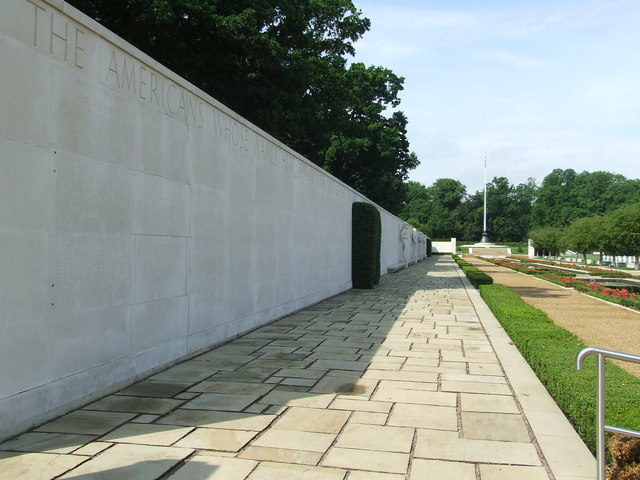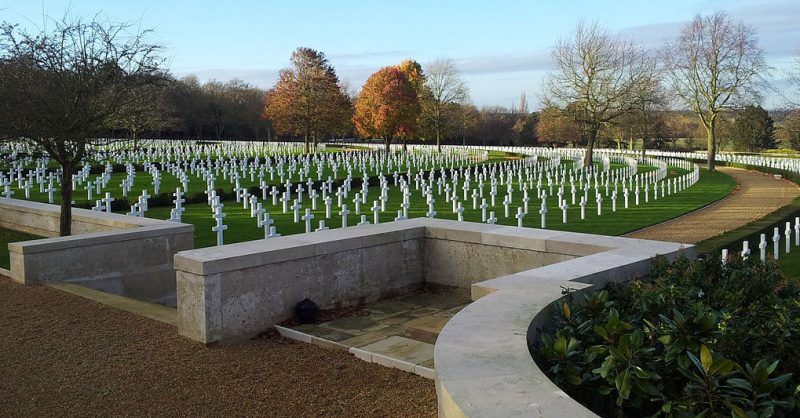First Lieutenant Ben B. Barnes flew a P-51 fighter plane in the 361st Fighter Squadron, 356th Fighter Group. On December 5, 1944, he was part of an escort mission to Berlin, Germany, protecting US bombers. He had been in Europe for less than six months.
As they returned from the bombing run, they ran into enemy forces. Barnes was last seen northeast of Berlin over Eberswalde, Germany. That area was occupied by Russian forces so the American Graves Registration team could not investigate any further. For that reason, Barnes was declared missing in action.
After the war, the political situation with the Soviets did not improve, and the US government was still unable to search for Barnes’ remains. His name was included on the Walls of the Missing at Cambridge American Cemetery in Madingley, England, along with 5,000 other Americans as it was not clear whether it would ever be possible to recover his remains. American Battle Monuments Commission (ABMC) World War II cemeteries around the world include the names of anyone considered missing in action, lost or buried at sea.

Photo Credit
The location where their name is recorded is based either on the place where they went missing or the location of the airbase they flew from. The US government picked this method to honor the service members who rest in unmarked graves. For over 60 years, Barnes remained one of 70,000 Americans who fought in World War II and whose remains have never been recovered. In 2010, though, the Department of Defense found a lead that they hoped would help them recover Barnes’s remains.
The Joint POW/MIA Accounting Command (now known as the Defense POW/MIA Accounting Agency (DPAA) sent an investigation team to Germany in 2010 to engage in field investigations and interview a witness of the crash. The witness took investigators to the crash site which they found to be consistent with records received from German investigators in the 1950s.
The DPAA then brought in a recovery team in 2015. They found two .50-caliber machine guns, physical remains, and some personal effects. The serial numbers on the machine guns matched those of the guns on Barnes’ plane. The DNA in the physical remains matched Barnes’ DNA as well as dental and other evidence, American Battle Monuments Commission reported.
Barnes’ next of kin decided to bury him in Miller, South Dakota. On October 15, 2016, almost 72 years after his final flight, he was buried with full military honors. The staff at Cambridge American Cemetery placed a bronze rosette next to his name on the wall to show that he had been recovered and accounted for.
The Martlesham Heath Aviation Society and Control Tower Museum honored him during their Remembrance Sunday ceremony on November 13. Local citizens still call it their duty to honor those who were based at the Martlesham Airfield for the duration of the war.
